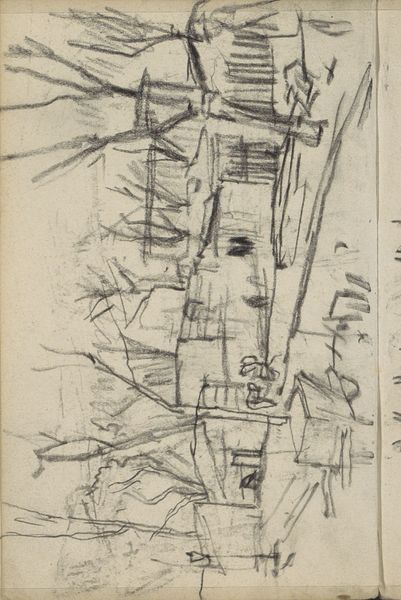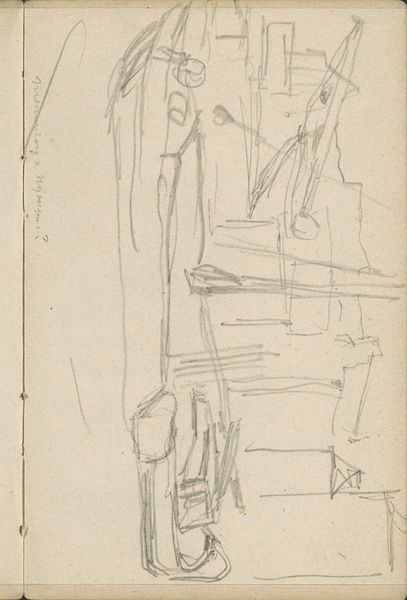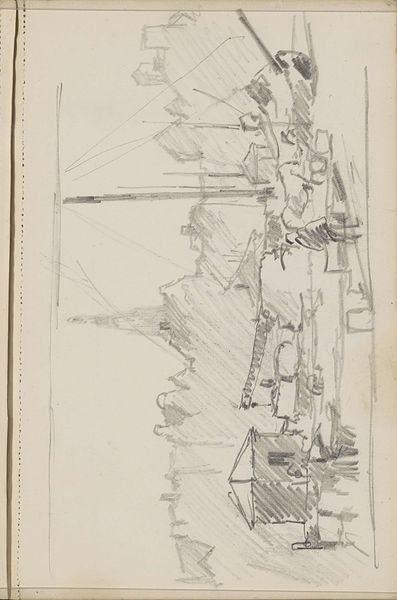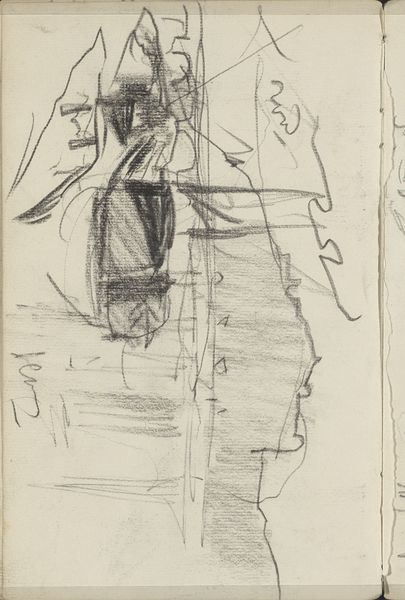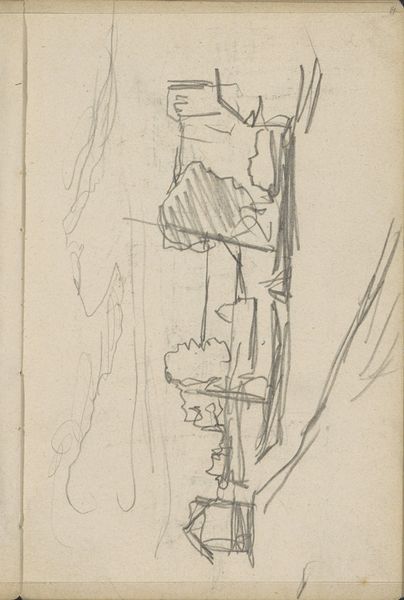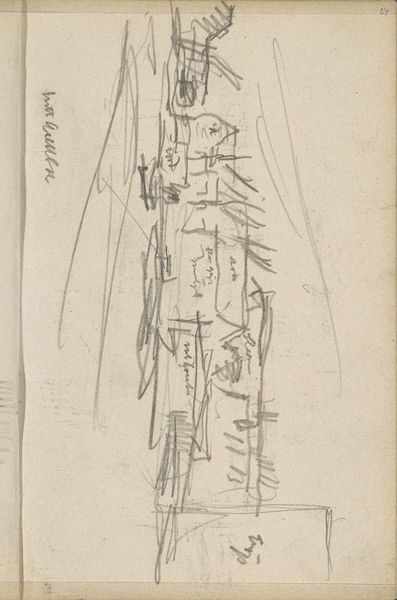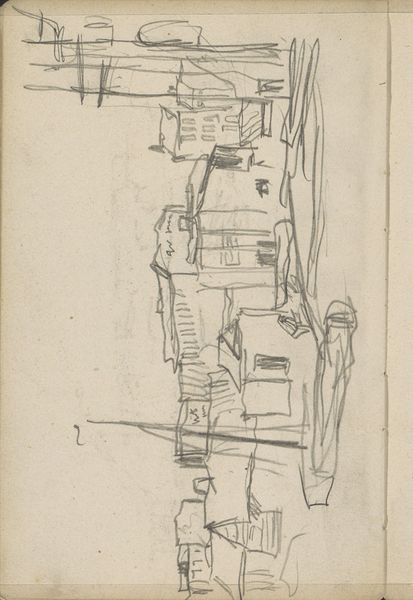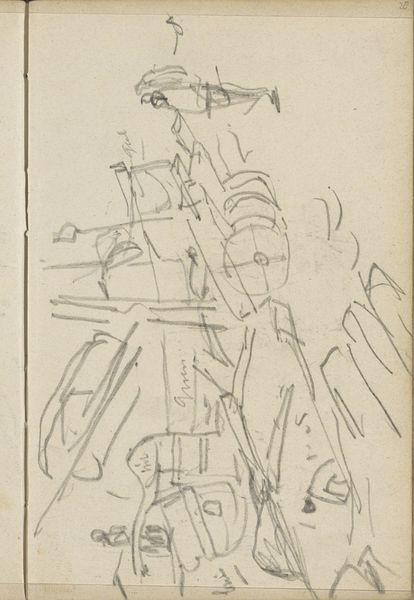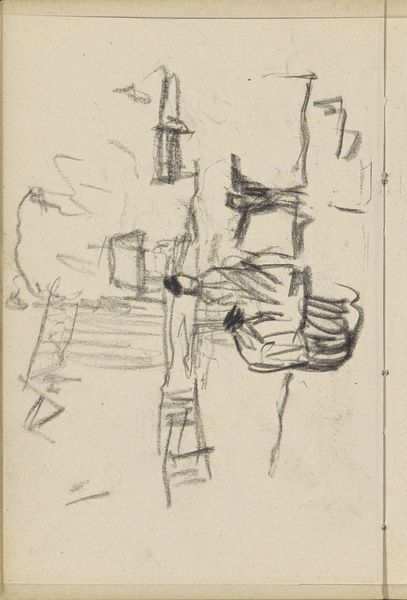
Copyright: Rijks Museum: Open Domain
Curator: Breitner's "Stadsgezicht met water," or "Cityscape with Water," dating from around 1903, is rendered in graphite. Editor: Oh, it feels…almost frantic. Like a visual echo of the city’s constant hum, sketched on a day someone forgot to turn down the volume. What strikes me first is this wonderfully chaotic energy—it is barely holding itself together. Curator: Indeed. The sketchiness certainly lends a sense of immediacy. Notice how Breitner uses a network of hatching and cross-hatching to define form, building density where he seeks shadow. Editor: Shadow... and perhaps some gloom? Those bundled figures feel dwarfed by the urban skeleton around them. Or am I projecting again? Curator: One could argue that the verticality of the composition—the insistent upward thrust of structural elements—functions to minimize the human form. Breitner was very invested in urban realities. Editor: Realities that were grey, I suppose, since he picked graphite! But in all seriousness, there's a deliberate starkness that almost foreshadows some of the grittier social realism to come later in the century. And you’d almost call him expressionist by virtue of what he leaves OUT—very little refinement. Curator: Well, that tension between the real and the represented is key here. The quick, almost impressionistic strokes are at odds with what would seem like the inherent stillness of architecture and structures, like those piers. Editor: Precisely! A snapshot aesthetic grappling with something weighty and permanent. But also, and this is a wild guess, I think the sketchbook itself being bound adds another element— the gridded texture hints at restriction or imposed order on chaos. Curator: That is an interesting point, particularly given that this drawing now resides at the Rijksmuseum— the apotheosis of institutional approval. But now a century on it serves more as a document and testament of a lost time. Editor: Well said. I think for me, the joy in viewing this particular drawing, is seeing how the artist captured what they deemed meaningful enough, from a scene they deemed meaningful enough to capture, during one afternoon in 1903. What a thought.
Comments
No comments
Be the first to comment and join the conversation on the ultimate creative platform.
